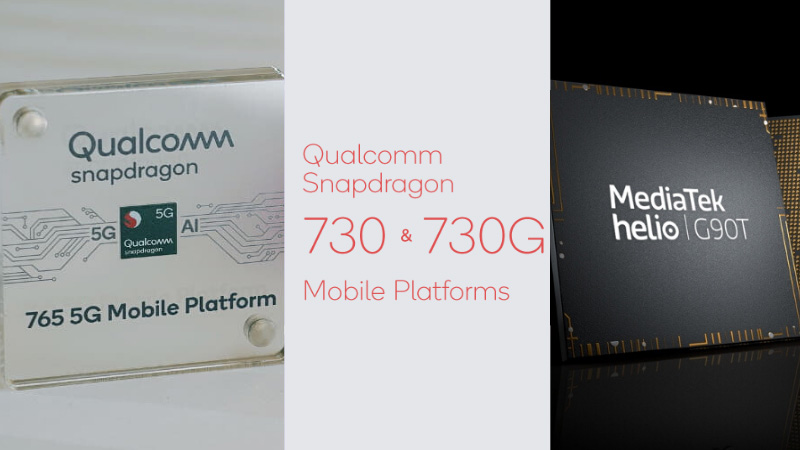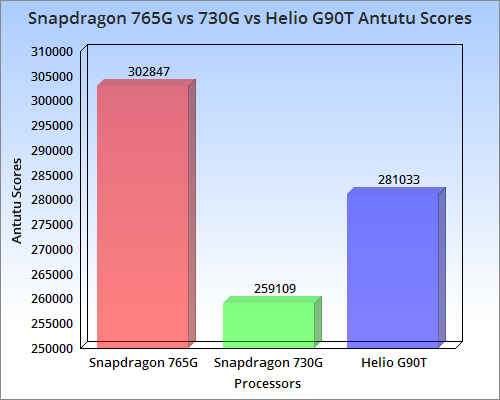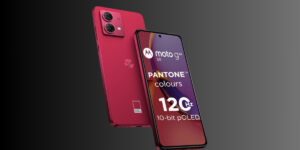5G being the center of attention in 2020, Qualcomm has launched a chipset that will most probably revolutionize the mid-tier smartphone industry. A couple of months ago, 5G connectivity was something we saw only on flagship devices. Even now, only top-tier devices come with 5G connectivity. But with the launch of the Snapdragon 765 and 765G, things are about to change.
Leaving aside the 5G connectivity, the new Snapdragon 765G is definitely to be a beast in terms of gaming. The G at the end refers to gaming and is said to give a 15% GPU boost over the usual Snapdragon 765. But the 765G is not the only gaming-centric budget chipset out there. There is the predecessor, 730G, which has a class of its own. But battling it out with Qualcomm, MediaTek also launched a budget gaming-centric processor, and that is the Mediatek Helio G90T (seen as the Redmi Note 8 Pro). So, after the 730G’s launch, how do these three processors fare against each other? Let’s take a look.
Snapdragon 765G vs Snapdragon 730G vs Helio G90T
CPU and Performance:
The Snapdragon 765G comes with an octa-core setup with two performance cores and six power-efficient cores. That is, we have a kryo 475 prime core clocked at 2.4 GHz, a kryo 475 Gold core clocked at 2.2 GHz, and six power-efficient cores clocked at 1.8 GHz. The Snapdragon 730G has somewhat similar hardware, with two kryo 470 cores clocked at 2.2 GHz and six other kryo 470 cores clocked at 1.8 GHz. The Helio G90T, too, went with two powerful Cortex-A76 cores clocked at 2.05 GHz and six power-efficient Cortex-A55 cores clocked at 2.0 GHz. The kryo cores on Qualcomm processors are actually the same A76 and A55 cores, but Qualcomm somewhat optimizes them according to their needs, hence the difference in name.
Manufacturing Process:
In terms of build, the 765G uses Samsung’s 7nm node architecture, while the 730G has an 8nm architecture. The G90T here has the biggest architecture built of 12nm. This makes the Mediatek processors way more power-hungry than the Qualcomm offerings.
GPU:
The Snapdragon 765G comes with the Adreno 620, which is claimed by Qualcomm to be 20% better in performance than the Adreno 618 we see on the Snapdragon 730G. Coming to the Helio G90T, we see the Mali-G76 graphics processor, which, in terms of data, actually comes equal to the Adreno 620. In terms of real-world usage, though, both of these processors can be expected to be on par with each other. In terms of numbers, the Adreno 620 might just get an inch ahead because Adreno processors are claimed to provide a more lag-free experience than Mali graphics processors.
Optics:
Both the Snapdragon processors offer similar support of a dual 22MP+22MP camera or a single 192MP camera. This is for both the end and front. The number 192 can be achieved only by downsizing some camera features. Otherwise, it is actually restricted to just 36MP. Compared to this, the G90T supports a dual 24MP+16MP camera at 30 fps, a single 64MP camera at 22.5 fps, or a single camera of 48MP at 30 fps.
RAM & Storage:
The 765G can support up to 12GB of LPDDR4X RAM, the 730G supports up to 8GB of LPDDR4X RAM, while the G90T supports up to 10GB of LPDDR4X RAM. So the 765G goes ahead here; however, even now, 12 GB is overkill, and we will probably see budget devices with a maximum of 8GB of RAM and nothing more. So, the increase might actually not matter in reality. Moreover, we have support for UFS 2.1 in all three of them. Yes, there is no support for UFS 3.0, but that is acceptable since these are all chipsets we will see on most budget-specific devices and not the higher-end flagship ones.
Display:
The 765G can support a display up to QHD+ at a refresh rate of 60 Hz or an FHD+ display at a refresh rate of up to 120 Hz. The 730G, on the other hand, also has support for QHD+ resolution, but there is nothing about the refresh rates. It only has support for 60 Hz panels. Similarly, the G90T only has support for 60 Hz panels with a maximum resolution of FHD+. So Qualcomm as a whole takes the lead here by a huge margin against the Mediatek chipset.
Connectivity:
The 765G comes with the latest Snapdragon X52 5G modem. This gives the 765G a download speed of up to 3.7Gbps and an upload speed of up to 1.2Gbps, which is provided the connection is a 5G connection. The 730G lies way back here with the X15 LTE modem chip, which offers a maximum download speed of around 800Mbps and a maximum upload speed of 150Mbps. The G90T offers the lowest here, with a download speed of up to 600Mbps and an upload speed of up to 150Mbps.
Benchmark Scores:
The 765G has not yet been tested on Geekbench, but we have the results of the 730G and the Helio G90T. The 730G, in terms of single-core, scores 2,538 as compared to the G90T scoring a single-core score of 2,468. In terms of multi-core, though, the G90T pulls ahead with a score of 7514 points as compared to 6927 points scored by the 730G. So both of them are pretty neck and neck in Geekbench.
Now, if we move on to Antutu, we have results on the Snapdragon 765G, scoring a total of 3,02,847 points. It is followed by the G90T, with a score of 2,81,033 points. In the last position, we have the Snapdragon 730G with a total of 2,59,109 points.
Specifications Comparison
| SoC | Snapdragon 765G | Snapdragon 730G | Helio G90T |
| Process | 7nm | 8nm | 12nm |
| CPU | Octa-core: 1x Kryo 475 (A76 based) @ 2.3 GHz 1x Kryo 475 (A76 based) @2.4 GHz 6x A55 core @1.8 GHz | Octa-core: 2x Kryo 470 (A76 based) @2.2 GHz 6x Kryo 470 (A55 based) @1.8 GHz | Octa-core: 2x Cortex-A76 @ 2.05 GHz 6x Cortex-A55 @ 2.0 GHz |
| GPU | Adreno 620 | Adreno 618 | Mali-G76 |
| Camera | Single Upto 192MP | Single Upto 192MP | Single Upto 64MP |
| Display | QHD+ (3360x1440 pixels) @60Hz Full HD+ (2560 x 1080 pixels) @120Hz HDR10+ Support | QHD+ (3360x1440) @60Hz pixels HDR10 Support | Full HD+ (2520x1080 pixels) |
| RAM | 12GB, LPDDR4X | 8GB, LPDDR4X | 10GB, LPDDR4X |
| Storage | UFS 2.1 / eMMC 5.1 | UFS 2.1 / eMMC 5.1 | UFS 2.1 / eMMC 5.1 |
| AI | Hexagon 696 DSP | Hexagon 688 DSP | CorePilot NeuroPilot Pump Express Tiny Sensor Hub |
| Charging | Quick Charge 4+ | Quick Charge 4+ | Fast Charging |
| Modem | Snapdragon X52 5G Modem | Snapdragon X15 LTE Modem | Cat-12 4G LTE WorldMode modem |
| Model | SDM765 | SDM735 | MTK G90T |
Which One is the Better Processor?
Yes, the 765G is the best in the lot, and it is quite expected since it is the newest chipset of the three. The G90T from MediaTek does give it a good competition, but it is just not as good as the 765G. The added bonus of 5G connectivity just takes the 765G to a whole new level. In terms of gaming, though, we can expect somewhat similar performance from all of them in real-life usage. However, if we look at the support that Snapdragon processors provide, it is quite clear that Mediatek still has a bit of a catching up to do. Overall, though, all three of these are quite capable chips, and they are perfect for the mid-range devices that have been growing so popular in recent times in the smartphone industry.













Good explanation friend